You’ve probably heard that you should do kegels but wondered what exactly is a kegel–the term is pretty vague. A kegel is simply a pelvic floor muscle contraction.
The term “kegel” was coined in the late 1940s after gynecologist Arnold Kegel. He recommended performing pelvic floor muscle exercises to help decrease urinary incontinence and severity of pelvic organ prolapse.
The pelvic health field continued to grow to include using biofeedback training and now has integrated the orthopedic lens into pelvic health physical therapy and occupational therapy.
Types of kegel exercises
There are a few types of kegels.
Quick flick
A quick flick kegel is a pelvic floor muscle contraction is when you contract and release the pelvic floor muscle without holding.
This trains the fast twitch muscle fibers, which allows your pelvic floor muscle react unconsciously and quickly to sudden and forceful intra-abdominal pressure. This automatic reaction can prevent urinary incontinence and increase core stability, which is important for back and hip health.
For example, if you leak a little when you sneeze, your fast twitch pelvic floor muscle fibers could use a boost. Quick flick pelvic floor muscle contractions can help strengthen these fast twitch fibers, which make up 30% of the muscle fibers in the pelvic floor.
Prolonged holds
Slow twitch muscle fibers make up 70% of the muscle fibers of the pelvic floor. Try contracting for 5 seconds. If that is possible, try 8 seconds, then 10 seconds.
This trains the slow twitch muscle fibers, which helps with endurance. For example, if you need to use the toilet and you are stuck in traffic you will be happy your slow twitch fibers have been in training.
Eccentric control
When a muscle contracts we look at two phases: concentric contraction (shortening) and eccentric contraction (lengthening).
Picture a bicep curl: as you lift the weight up toward your shoulders the biceps gets shorter (the bump in the front of the arm). As you bring the weight back down, the muscle lengthens. This is the eccentric contraction phase.
The pelvic floor also contracts eccentrically and it’s a nice challenge to control. We can find great strength gains when working eccentric control. Try this elevator exercise:
- With your pelvic floor muscles resting at baseline, imagine you are getting into an elevator on the first floor of a three-story building.
- Contract your pelvic floor muscles 50%. This is as if you have gone up to the second floor. Hold here for 3 seconds.
- Now contract your pelvic floor muscles fully. This is as if you have gone up to the third floor. Hold here for 3 seconds.
- Here is the tricky part: only release your pelvic floor halfway and hold here at the second floor. Hold here for 3 seconds.
- Now fully release down at the first floor.
How did that go? Eccentric training can be quite challenging and fun. Just be sure to fully release afterwards. If you want to spend more time focusing on releasing after strengthening, especially if you are uptraining after having had pelvic pain in the past, try breathing and releasing in Modified Happy Baby Pose.
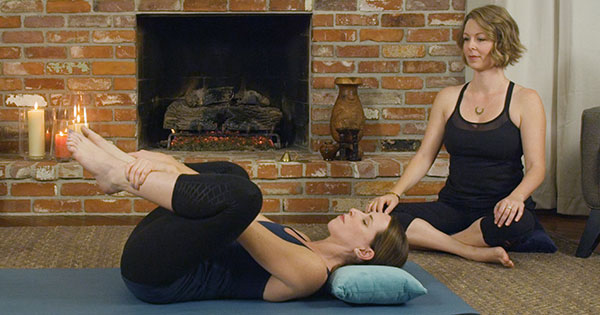
Bulge
The ”bulge”…sounds like a 1960s sci-fi movie!
Similar to the eccentric control exercises, the bulge is a lengthening, bearing down movement where the pelvic floor muscles elongate.
This elongation is what needs to happen when we have bowel movements. For some folks with constipation, their muscles have rewired to pull up and in rather than elongate out. With mindfulness, practice, and seeing a pelvic rehab therapist, it is possible to retrain.
This elongation is also what needs to happen during childbirth via vaginal delivery to get that little nugget out of there!
How to do a kegel: different cues
Cues are an important aspect of contracting pelvic floor muscles. If you just squeeze, you may see the opposite result—a bearing down.
It helps to visualize the pelvic floor muscles and the roles different muscles play in contractions. There are three layers of pelvic floor muscles.
The first and second layers squeeze around the ends of the tubes (urethra, vagina, and anus) to prevent leakage. This is the first aspect of the contraction.
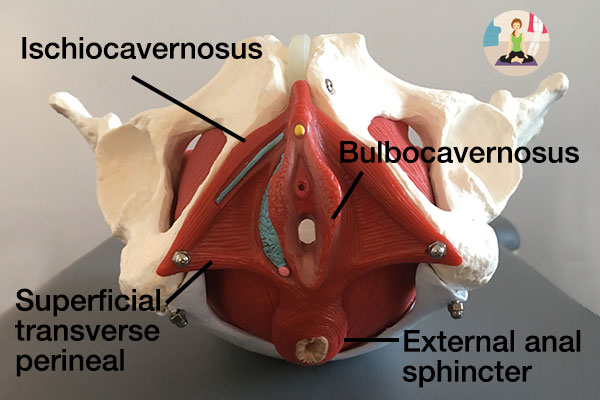
First layer of the pelvic floor muscles
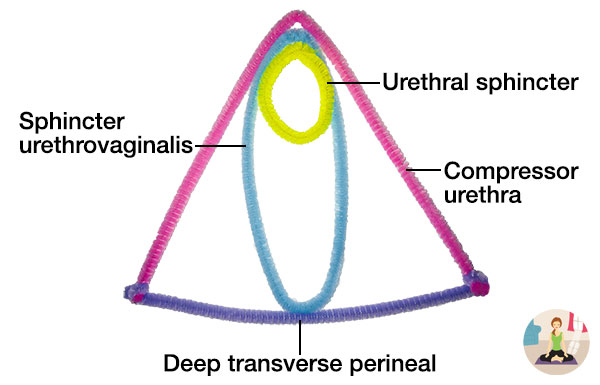
Second layer of the pelvic floor muscles
The third layer, shaped like a hammock or sling, helps hold the pelvic organs up. This aspect of the contraction is a lift up and in.
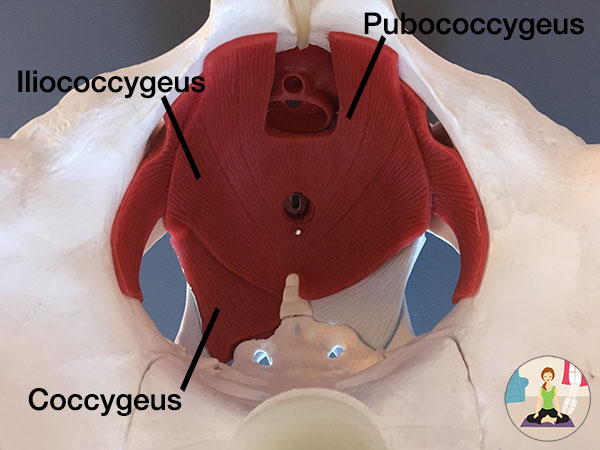
Third layer of the pelvic floor muscles
There are several ways to cue pelvic floor muscle contractions. A cue my patients find particularly helpful is to “gather the tissue together and lift up and in.” This is cuing the closure of the first and second layers, cues the lift of the third layer, and avoids the “squeeze.”
Other cues to try:
- Stop the flow of urine
- Stop the flow of gas
- Pull your lower belly toward your spine
- Lift your tailbone towards your pubic bone or belly button
- Lift the scrotum as if you are walking into a cold lake
- Lift a pearl with your labia
When you have trouble doing a kegel
You might have noticed that when you have an urgent need to go to the bathroom that you cross your legs. You might even hold the perineum if it’s a real emergency! You are calling in the helper muscles.
The inner thigh muscles (adductors) are often used as helper muscles (co-contractors). We can decide to use them as we are training the pelvic floor muscle to get stronger by using them at the same time as the pelvic floor muscle.
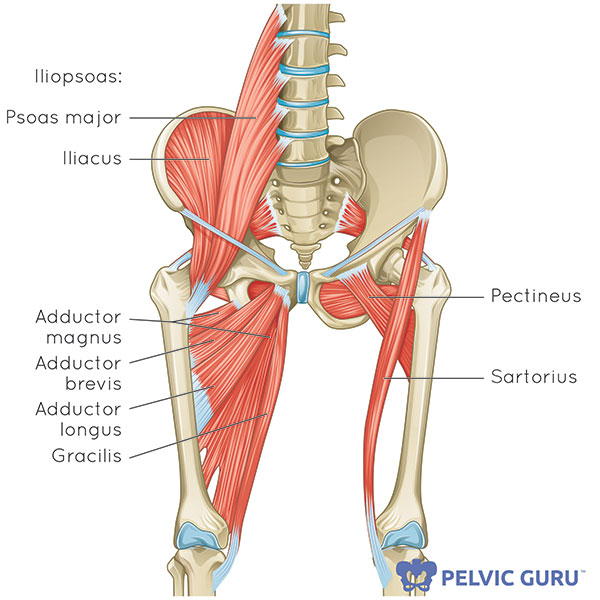
We do the opposite for people with pelvic pain or urinary urgency/frequency we encourage them not to train the adductors, but to lengthen them. Bound Angle and Straddle are two yoga postures to help lengthen the inner thighs.
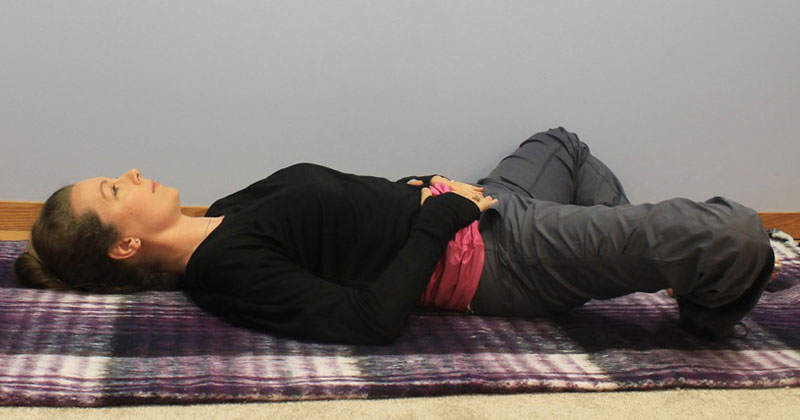
The glut max is also used as a helper muscle. How do you know if you are using your glut max when you do pelvic floor muscle contractions? If you are sitting and your head bobs up and down with each contraction, then you are busted! (If your eyebrows raise up and down, that’s allowed ;))
What’s the deal with using these muscles in coordination with the pelvic floor muscle?
If you are learning how to contract the pelvic floor muscles, feel free to try and use the helper muscles to locate where the pelvic floor muscles are.
Sometimes people need to pull everything in to get “overflow” contractions and then we can get more specific from there.
In real life, we aren’t going to lay down and isolate our pelvic floor muscle. In real life, we are using our pelvic floor muscle at the same time as many of other muscles and while we are breathing. (It’s helpful to learn how to isolate though.)
Other ideas to help increase your pelvic floor muscle activation :
- Lip pursing: When you purse your lips while doing a pelvic floor muscle contraction, do you have more success?
- Fist clenching: Will making and holding fists while holding a pelvic floor muscle contraction
- Toe curling: The area of the brain that reads the sensory aspect of the pelvic floor muscle is close to the feet! Does toe curling help you activate the pelvic floor muscle?
Three steps to training pelvic floor muscles
In regards to training the pelvic floor muscles, I think of it in three steps:
- create awareness of where they are
- contract them without contracting other muscles (isolate)
- integrate into function
Awareness
You might have just learned what your pelvic floor muscles are. Building awareness through education, like looking at pelvic models and anatomy photos, will help you find the muscles.
Other ways to build awareness is through observation of contractions while looking in a hand mirror, palpation of the muscles while practicing contractions, and biofeedback (external or internal sensor).
Isolation
We spoke about different ways to practice isolating the pelvic floor muscle with cuing and different types of contractions. You can practice while sitting on a therapy ball or on a rolled up hand towel.
Functional
Add your pelvic floor muscle contraction into functional tasks, like going from sit to stand and lifting.
Try inhaling down into chair pose, then exhaling and lifting pelvic floor muscle and contracting the abdominal wall when coming back to standing.
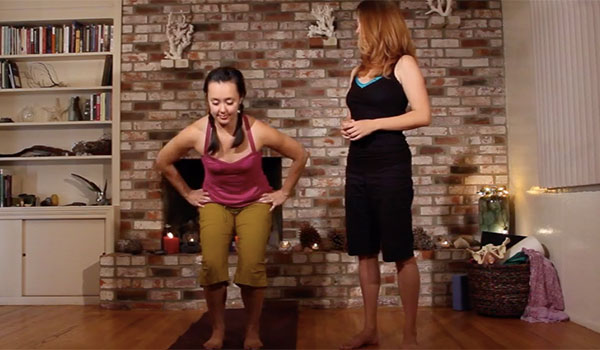
When lifting a baby, bag, or any other object, inhale as you squat down to lift then exhale (contracting your pelvic floor muscle and abdominal wall) as you come up to stand.
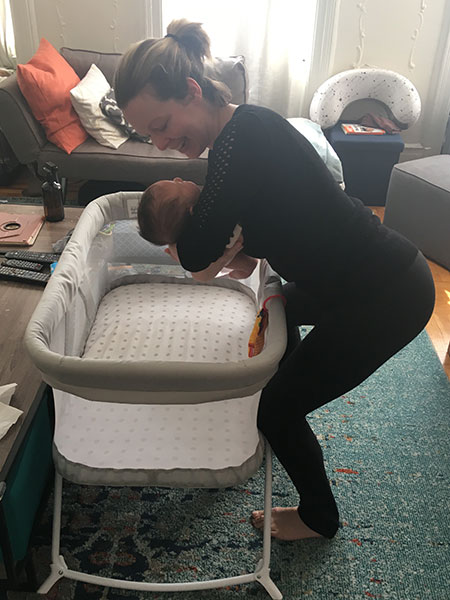


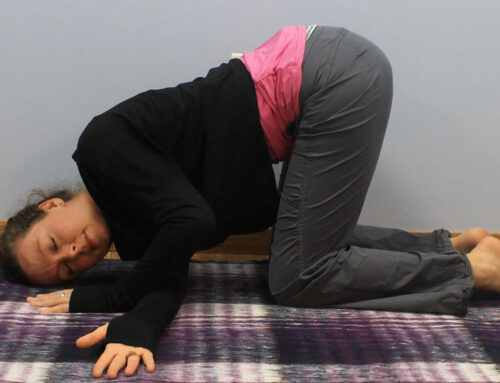
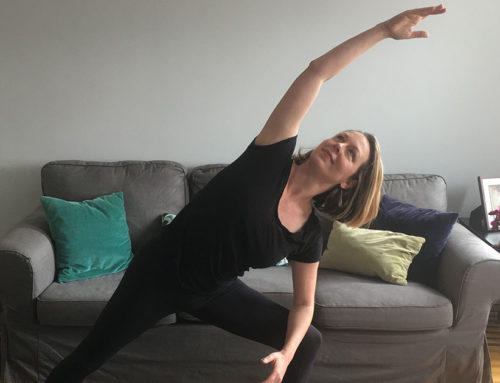

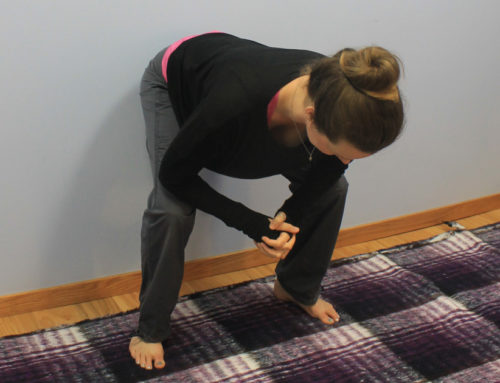
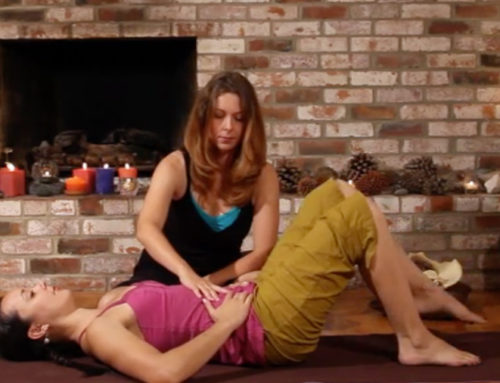
Thank for all your efforts to help educate and teach about the pelvic floor. I find it especially helpful when you don’t have access to a pelvic floor specialist.
I’m thrilled to hear this Karen. I think the more we can understand about our bodies the better – knowledge is power! Thanks for sharing your thoughts!